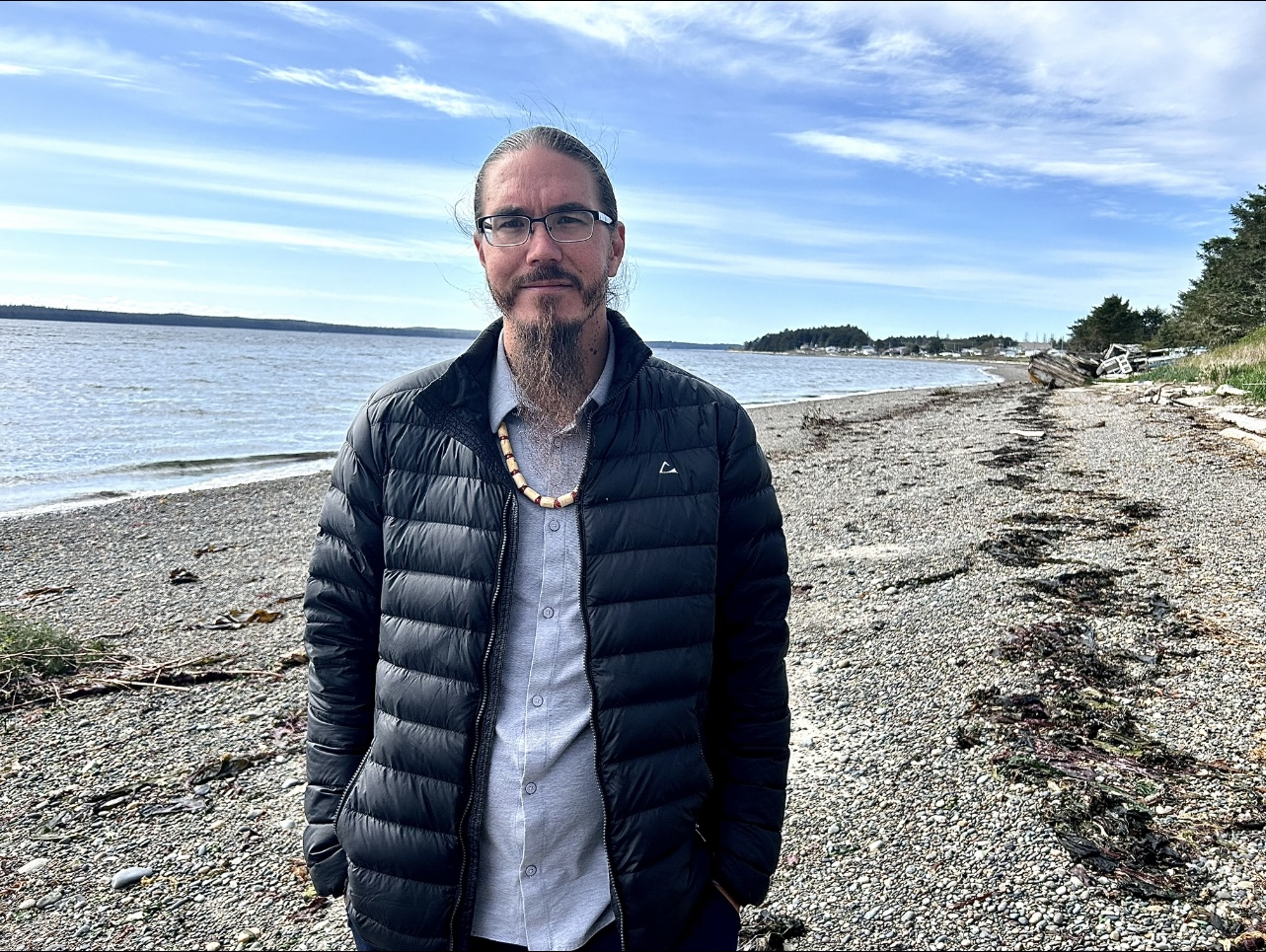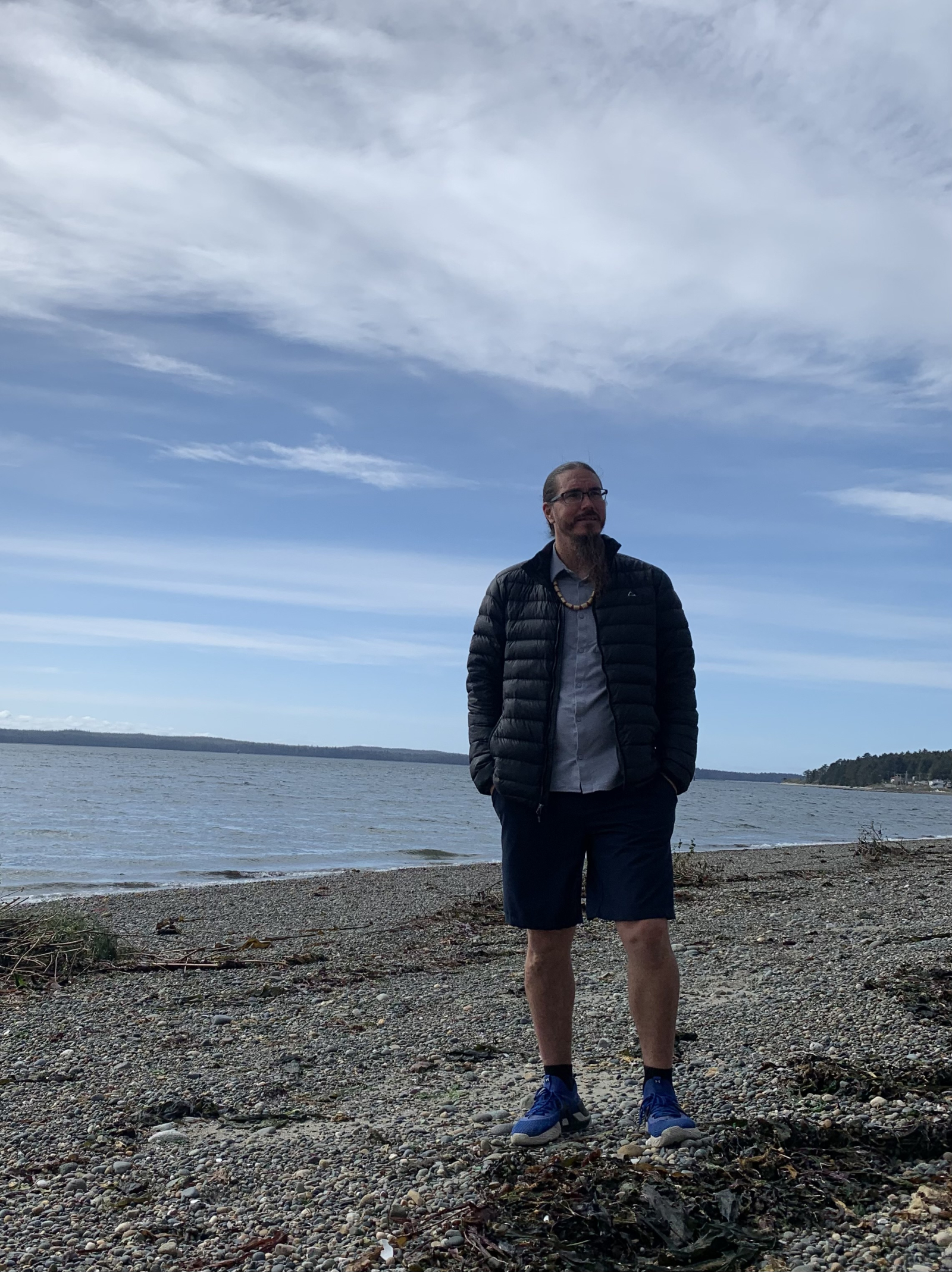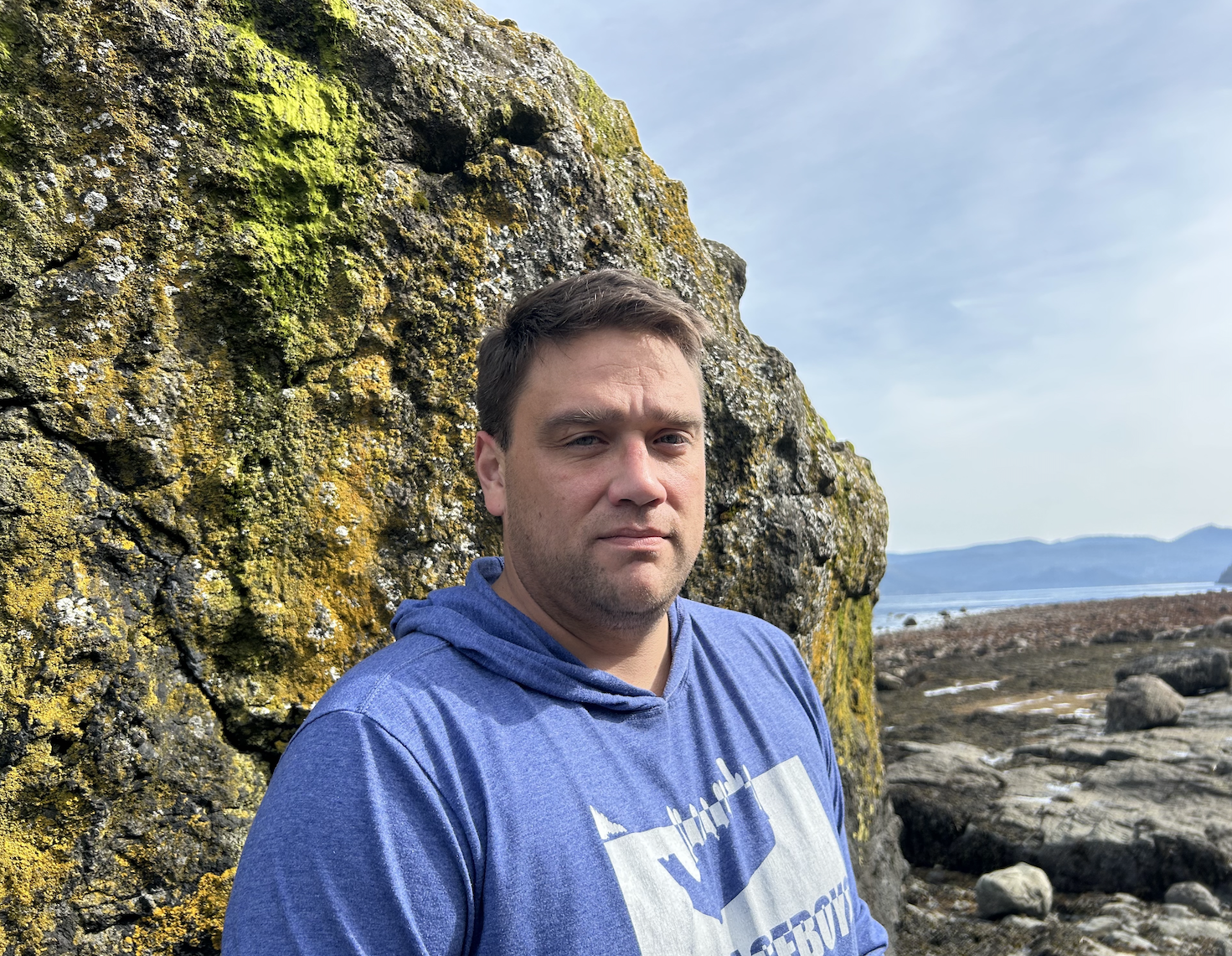The fight for Haida Gwaii
Scroll down to continueThe Haida people have lived on Haida Gwaii, an archipelago off the coast of British Columbia, longer than the trees. From generation to generation, the Haida have passed on this history orally but only recently has western science started to catch up.
Oral histories tell of a landscape covered with grass and tundra-like vegetation. “Our relatives saw the first tree and recount floods and tidal waves in their time and before,” wrote Guujaaw, a Haida elder and former president of the Council of the Haida Nation, in the foreword of Haida Gwaii: Human History and Environment from the Time of Loon to the Time of the Iron People, an archaeological book published in 2005 that traces the Haida oral histories and paleoenvironmental records over millennia.
Using fossil records, western archaeology has pinned specific years to these oral histories. In 2019, new evidence was discovered by Simon Fraser University paleobotanist Rolf Mathewes (one of the academics who edited the Haida human history book), suggesting people have lived on this archipelago for at least 13,000 years. That discovery pushes the known human activity in Haida Gwaii back an additional 2,000 years than was previously believed by archaeologists. Meanwhile, the Holocene began about 11,700 years ago, creating a climate suitable for spruce, pine and hemlock to grow.
But put archaeology aside for a minute. Haidas have called this place home since Raven, an important supernatural being in Haida culture, coaxed humanity out of a clamshell at a place called Rose Spit on the north end of the archipelago. It’s an origin story that speaks to the intimate ties between Haida culture, society and the environment.
From both the traditional Haida and western science perspectives, the consensus is clear: Haida have stewarded the land, water and sky of Haida Gwaii since tllsda gaagwii (a long, long time ago).
With that long view in mind, the Haida’s exclusive stewardship of this region has been interrupted for only a recent blink of an eye. It’s been 250 years since Spanish mariner Juan Pérez made first contact and 200 years since the British were hunting sea otters to extinction for their pelts. Just over 150 years ago, Canada officially came into being, using force to impose residential schools, banning important cultural practices like the potlatch and inflicting disease on the Haida Nation.
The Haida population was nearly wiped out and cultural knowledge was lost as species were hunted to extinction, severing the people's relationships to the natural world.
In an age of supposed reconciliation, this history matters.
“It's taken 150-plus years of tearing down what we had,” said Council of the Haida Nation president Gaagwiis. “It's going to take a significant amount of time to really build it up to its true potential.”

The nation’s efforts to restore balance to Haida Gwaii’s ecosystems, while protecting it from new threats like shipping traffic from the liquefied natural gas (LNG) industry, have propelled it to further assert its right to steward the lands, water and air of Haida Gwaii in a new arena: Canadian courts.
No treaty has ever been signed, and the territory remains unceded. In 2002, the nation filed a title application in a B.C. court to have its terrestrial and marine jurisdictions officially recognized by Crown governments. That court process remained stalled until two years ago, when provincial and federal governments and the Council of the Haida Nation signed the GayG̱ahlda “Changing Tide” framework agreement — a document that sets the stage for further reconciliation negotiations. The agreement hinges on Crown governments acknowledging, for the first time, the Haida’s pre-existing sovereignty and inherent title and right to self-government.
Put plainly, the title cases are not asking the Crown to grant title to Haida Gwaii to the Council of the Haida Nation because it is not Canada’s to give. The cases are an attempt to have Canada officially recognize that Haida Gwaii, and the responsibility to manage it, belongs to the Haida Nation. The way it did before trees grew.
Negotiating title
Scroll down to continueTitle negotiations are being led by the Council of the Haida Nation, the Haida’s modern political arm. It was formed in 1974 to organize citizens into a single political body, and the CHN constitution formally mandates the council to settle questions of title and rights to ensure Haida relationships and obligations to the natural world continue indefinitely. The nation expects to hit a major milestone soon.
In a written update to the people of Haida Gwaii published this spring, Gaagwiis said the nation expects to sign a Haida title land agreement with provincial and federal governments this year.
“The canoe is an analogy for our current situation. From the canoe, we can finally see land after a long journey of paddling through adverse conditions,” he wrote. “The waters are beginning to calm, and we are in sight of where we will set up a new village, under our jurisdiction and begin to rebuild again.
“Although we can begin to see our future, we still must finish this leg of journey with a great push as many aboard our canoe are weary from a lifetime of paddling against the currents,” he wrote.

The statement of claim that kicked off this legal fight for recognition in 2002 identifies the Haida Nation’s territory as stretching north to the Canada-Alaska border, east to encompass half of the Hecate Strait, south to the halfway point toward Vancouver Island and west “out into the great abyss,” said CHN Vice-President Ginn wadluu un uula isdaa ayaagang (Trevor Russ).
The Haida Nation is inching closer to achieving this. In May, British Columbia recognized CHN as the official government of the Haida Nation — a prerequisite for securing title. Then in July, British Columbia, the federal government and the CHN signed the Nang K̲’uula • Nang K̲'úulaas Recognition Agreement that recognizes the Haida Nation holds title and rights, "including the inherent rights of governance and self-determination."
"By signing the Nang K̲’uula • Nang K̲'úulaas Recognition Agreement, both Canada and British Columbia have shown respect for the contemporary governance system of the Haida Nation," Gaagwiis said at the time. "This work sets the stage for peaceful co-existence between governments in a way that doesn’t compromise the inherent title and rights of the Haida Nation."
In a statement, former federal Crown-Indigenous Relations Minister Marc Miller called the recognition "long overdue and rightfully owed."
But the work is not over, and CHN says it’s learned from the experience of the Tsilhqot’in and Wet’suwet’en nations. Both have won important court sovereignty battles with Canada, yet are still subject to police violence and resource extraction battles on their traditional territories, the council says. Title “means very little if our plans for law, jurisdiction and management are not well understood and ready to implement,” says CHN. At the end of the legal road, CHN wants it to be clear to everyone how lands will be managed and laws applied.
Despite the complexity, Gaagwiis says it’s exciting to “think about the foundation that we're laying for the next generations to pick up and take on to get to that full expression of jurisdiction across the lands and waters.”
The jurisdictional questions are highly complex. The GayG̱ahlda/Changing Tide framework that paved the way for these negotiations aims to “reconcile pre-existing Haida sovereignty with assumed Crown sovereignty” with space for the relationship to evolve “over time based on the co-existence of Crown and Haida Nation governments and the ongoing process of reconciliation.”
To avoid negotiations dragging on endlessly, a 300-day trial starting in February 2026 was scheduled earlier this year. A court date exists as a bookend to keep pressure on negotiators. Whatever the sides cannot agree on will be litigated at that time.
When the trial comes, it promises to be one for the history books. The Council of the Haida Nation is asserting its authority under Haida law over Haida Gwaii as well as Aboriginal title to the lands, waters and air, Aboriginal rights including fisheries and forestry, and damages for having its jurisdiction disregarded for so long. To date, the nation has completed depositions or sworn statements with 15 Haida elders, commissioned multiple expert reports and made available to negotiators and the court more than 130,000 documents showing evidence of Haida title.
“Canada has been working in partnership with the Haida Nation and British Columbia to renew and strengthen our nation-to-nation relationship under the GayGahlda ‘Changing Tide’ Framework for Reconciliation,” the federal department for Crown-Indigenous Relations and Northern Affairs told Canada’s National Observer. But “discussions between the parties at the reconciliation table are conducted on a confidential basis.”
“While the preparations for trial are continuing, the Haida Nation, Canada and British Columbia committed in GayGahlda ‘Changing Tide’ Framework to make best efforts to seek a negotiated resolution and that a trial will not commence while the parties are engaged in good faith negotiations,” the department added. “Canada believes that the best way to address outstanding issues and achieve reconciliation with Indigenous Peoples is through negotiation and dialogue.”

At least one aspect of the negotiations has so far proved disappointing to the Haida. Crown governments are prepared to recognize Haida title to the land, but not the water, says Haida marine biologist Gwiisihlgaa (Dan McNeill).
“The marine realm, we don’t have that recognition yet,” he said. “But look how long it took us to get to this point, right?”
The Haida’s very origin stories centre around the ocean, proof of their deep interconnection to water and land and dependence on the ocean for food. Failure to secure marine title leaves them vulnerable to marine threats like increased ship traffic and overfishing.
McNeill said the Haida already exercise some jurisdiction on the ocean. Haida guardians monitor waterways and ecosystem health, and the nation establishes protected areas and buffer zones for large ships. Last year, Canada also committed to protecting 30 per cent of land and water by 2030. The Great Bear Sea — a patch of ocean the Haida lays partial claim to — is one of the main targets.
Crown-Indigenous Relations and Northern Affairs said negotiating “marine matters” is complex because it involves other federal bodies, like Transport Canada, Fisheries and Oceans Canada and the Coast Guard, as well as international commitments. The department reiterated marine negotiations are confidential.
“We're drawing lines on maps these days, and we're looking to protect certain areas on our coast all around us,” McNeill said, referring to marine protected areas. “I think moving forward here, certainly as we designate more areas, I'm going to be like, ‘Alright, if we ever get to acknowledgment, and we get to exercise our title within the area, it's probably going to be within these polygon areas that we drew on these maps.’”
Smell the earth
Scroll down to continueThere is a kid’s game played in Haida Gwaii called “Greet a Tree.” Kids partner up, and one is blindfolded. Their partner guides them through the forest and picks a tree. The child with the blindfold explores it by touch, noting the texture of the bark, places where branches emerge and any other distinguishing features. When the blindfolded child has soaked in as much as they can, their partner leads them away, spins them around and takes the blindfold off. The child is then challenged to find their tree.
It’s a fun game but serves an alternate purpose. The nation values the importance of teaching younger generations to connect to the land and how to live here according to Haida values. Connection games are one way to impart culture, says Aadiitsii Jaad (Marni York), a co-ordinator with a cultural youth program called Haida Gwaii Rediscovery.
“That is an example of connecting, and it's really cool because the success rate is really high,” York said. “You can't be disrespectful [to nature] after spending all that time… those lessons are long held.”
In another tag-like game called “Hungry Hungry Marten,” children sprint through the spruce, cedar and hemlock trees that stand as tall as can be, until inevitably, one trips and sails face-first into the thick, spongy moss covering the forest floor. Like most kids, they’re upset when they fall, but York said she tells them to not get up.
“Stick your head back down and smell the earth,” she tells them.
These connection games, and the rediscovery program, are supported by the CHN and are part of a broader effort by Haida leadership to restore the Haida’s powerful connection with their land, water and air, and societal and cultural health.

Securing title to Haida Gwaii is about protecting this ancient and enduring relationship.
Gaagwiis says colonialism, which restricted Indigenous people to living on reserves and banned potlatches, attempted to sever these relationships to traditional ways of life. Steadily, though, people have picked up the pieces and paddled forward.
As the Haida increasingly raise poles, host potlatches, weave cedar bark and spruce root or sing and dance, the connection to the land is reinforced, he said.
“The culture comes from the abundance of the territory –– from the land and the sea –– and so if we don't have that base of self-sufficiency, the ability to get food from here, to get the wood from here, you can't carve the poles … and you can't feed the people,” he said. “You're going to be dependent on going to the grocery store, dependent on food from elsewhere.”
Haida will look after the land and sea, and recognize Haida Gwaii can still provide the base for self-sufficiency, but Gaagwiis recognizes “we’re also living in this contemporary time.” The challenge and goal is striking a balance that allows culture and traditional ways of life to be passed down while “adapting to realities of today,” he added.
The council believes having its title to Haida Gwaii formally recognized will help find this balance.
The Haida’s long-term objective, Gaagwiis says, is “looking after this place and our ability to look after ourselves here, and have Haida Gwaii provide for us.”
Reporting for this article was made possible by the support of the Institute for Journalism and Natural Resources, the Gordon and Betty Moore Foundation, Real Estate Foundation of BC and the McConnell Foundation.
